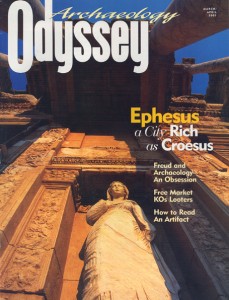Ideology from Artifacts
How ancient objects reveal the social reality of their time

We tend to think of ancient objects as either useful or beautiful—or both. A bit of text scratched on a clay tablet is used to communicate or record information; a finely filigreed golden earring is thought to be lovely; an elegant stairway, perhaps leading into the adyton (inner chamber) of a temple, may be functional and pleasing to behold.
But there is more to objects, ancient or modern, than utility or aesthetics. Things carry information about the world in which they were made; they are social messages given material form.1 The Statue of Liberty, for example, says a lot about American (and French) beliefs and ideas concerning freedom, immigration and international relations, among other things.
Already a library member? Log in here.
Institution user? Log in with your IP address.

